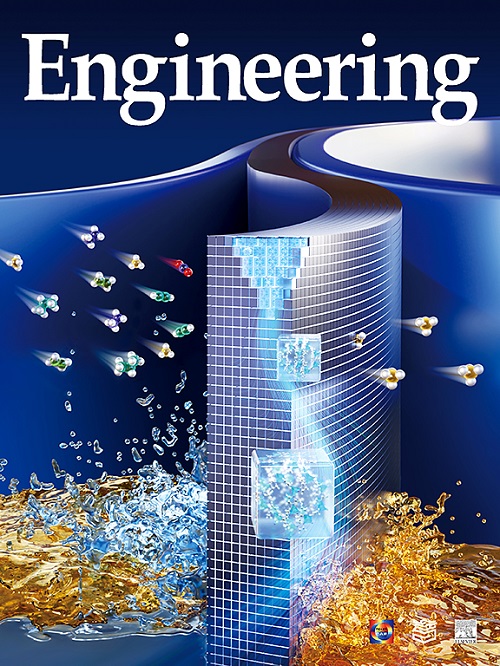Data Driven Comprehensive Performance Evaluation of Aeroengines: A Network Dynamic Approach
IF 10.1
1区 工程技术
Q1 ENGINEERING, MULTIDISCIPLINARY
引用次数: 0
Abstract
Aeroengines, often regarded as the heart of aircraft, are crucial for flight safety and performance. Comprehensive performance evaluation of aeroengines supports Prognostics and Health Management (PHM) and aeroengine digital engineering. Due to their highly integrated nature, aeroengines present challenges in performance evaluation because their test-run data are high-dimensional, large-scale, and exhibit strong nonlinear correlations among test indicators. To solve this problem, this study proposes a unified framework of the comprehensive performance evaluation of aeroengines to assess performance objectively and globally. Specifically, the network model and the dynamics model of aeroengine performance are constructed driven by test-run data, which can explain the patterns of system state changes and the internal relationship, and depict the system accurately. Based on that, three perturbations in the model are used to simulate three fault modes of aeroengines. Moreover, the comprehensive performance evaluation indexes of aeroengines are proposed to evaluate the performance dynamically from two dimensions, the coupling performance and the activity performance. Thirteen test-run qualified and four test-run failed aeroengines are used to validate and establish the qualified ranges. The results demonstrate that the comprehensive evaluation indexes can distinguish test-run qualified and test-run failed aeroengines. By changing the dynamic parameters, the comprehensive performance under any thrust and inlet guide vanes (IGV) angle can be estimated, broadening the test-run scenarios beyond a few typical states. This novel approach offers significant advancements for the comprehensive performance evaluation and management of aeroengines, paving the way for future PHM and aeroengine digital engineering developments.
数据驱动的航空发动机综合性能评价:一种网络动态方法
航空发动机通常被视为飞机的心脏,对飞行安全和性能至关重要。航空发动机的综合性能评估支持预测和健康管理(PHM)和航空发动机数字化工程。由于航空发动机具有高度集成化的特性,其测试运行数据是高维、大规模的,并且在测试指标之间表现出强烈的非线性相关性,因此在性能评估方面提出了挑战。为解决这一问题,本研究提出了统一的航空发动机综合性能评价框架,以实现对发动机性能的客观、全局评价。具体而言,在试车数据的驱动下,建立了航空发动机性能的网络模型和动力学模型,能够较好地解释系统状态变化规律和内部关系,准确地描述了系统。在此基础上,利用模型中的三个摄动来模拟航空发动机的三种故障模式。提出了航空发动机综合性能评价指标,从耦合性能和活动性两个维度对发动机性能进行动态评价。13台试运行合格和4台试运行不合格的航空发动机用于验证和建立合格范围。结果表明,综合评价指标可以区分试车合格和试车不合格的航空发动机。通过改变动力参数,可以估计任意推力和进口导叶(IGV)角度下的综合性能,拓宽了试运行场景,超出了几种典型状态。这种新方法为航空发动机的综合性能评估和管理提供了重大进展,为未来PHM和航空发动机数字化工程的发展铺平了道路。
本文章由计算机程序翻译,如有差异,请以英文原文为准。
求助全文
约1分钟内获得全文
求助全文
来源期刊

Engineering
Environmental Science-Environmental Engineering
自引率
1.60%
发文量
335
审稿时长
35 days
期刊介绍:
Engineering, an international open-access journal initiated by the Chinese Academy of Engineering (CAE) in 2015, serves as a distinguished platform for disseminating cutting-edge advancements in engineering R&D, sharing major research outputs, and highlighting key achievements worldwide. The journal's objectives encompass reporting progress in engineering science, fostering discussions on hot topics, addressing areas of interest, challenges, and prospects in engineering development, while considering human and environmental well-being and ethics in engineering. It aims to inspire breakthroughs and innovations with profound economic and social significance, propelling them to advanced international standards and transforming them into a new productive force. Ultimately, this endeavor seeks to bring about positive changes globally, benefit humanity, and shape a new future.
 求助内容:
求助内容: 应助结果提醒方式:
应助结果提醒方式:


